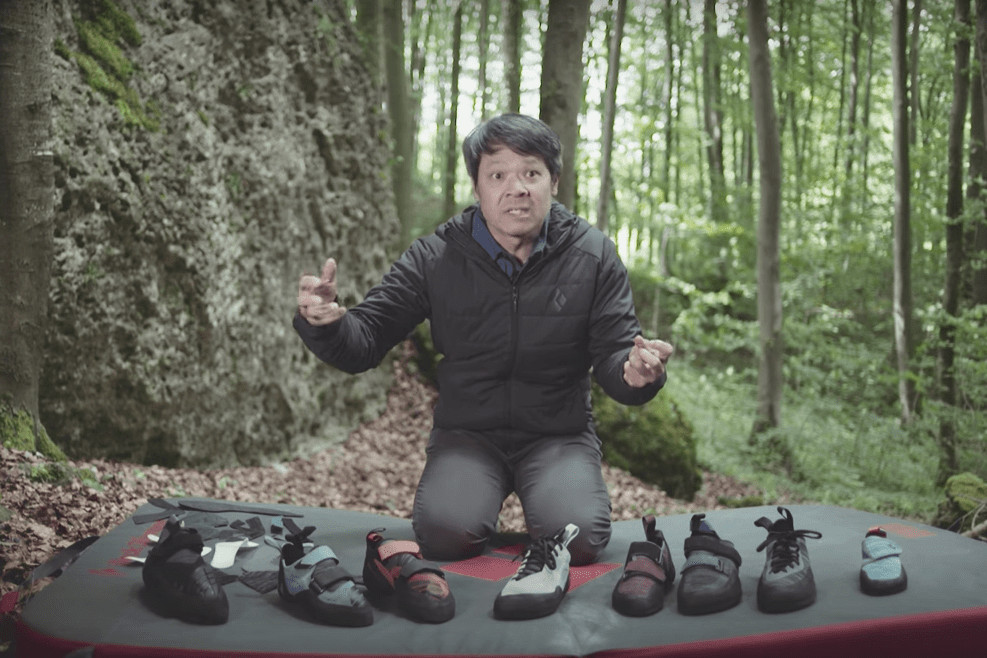From cams to harnesses
to belay devices and recently ropes
, too, Black Diamond has consistently delivered climbers with high-quality technical climbing gear for decades on end. Yet, even with such a wide breadth of offerings, they’ve had one missing component to their trusted repertoire: climbing shoes …
That is, until now.
This upcoming fall, Black Diamond will release the first entry-level models from its all-new line of technical climbing shoes, with a subsequent release of two high-performance models in early 2018.
The video above introduces us to the BD climbing shoe developer, insight into the process of creating them, and an up-close and on-the-rock look at the new shoes.
What to expect
In the production of their debuting lineup of climbing shoes, Black Diamond partnered with the Korean climbing shoe company, Butora, and is manufacturing the shoes in their China factory.
The first shoes that Black Diamond will release include the Momentum ($89 men’s or women’s, $59 kids), a shoe primarily designed for gym climbing, and the Aspect ($139), a lace-up, low-profile, all-around shoe, preferred for all-day trad or crack climbing. These will be exclusively available at REI upon debut.
The latter release in 2018 will introduce BD’s techy edging shoe, the Focus ($174), and their more aggressive, overhanging terrain option, the Shadow ($180).
For more details on the Momentum, watch this:
Technical features
NeoFriction rubber
All shoes utilize one of Butora’s proprietary rubber formulas to encompass the different needs of climbers:
- NeoFriction (baseline rubber for the Momentum)
- NeoFriction Force (stiffer rubber for the Aspect and Focus)
- NeoFriction Fuse (softer rubber for the Shadow)
Pebax midsole
In the creation of their new line, Black Diamond created three last shapes to cover the spectrum from neutral to aggressive styles, all of which incorporate a midsole made with a resin called Pebax. They claim that Pebax will significantly help retain the shape of the last for longer.
Rubber molded toe and heel rands
Rather than using pre-cut rubber shapes for the toe and heel rands, Black Diamond employs a technique of injecting rubber into 3D molds—a method they also use in creating other types of gear, including stoppers.
Black Diamond explains that this procedure provides more consistency across shoes and can offer a more precise way of designing and adjusting for various thicknesses without the added waste caused by trimming or shaving.
Polyester-propylene fabric
Featured on the Momentum (as shown in the video above), the polyester-propylene knit provides a more comfortable fabric for newer climbers or those who prefer a less vigorous shoe in the gym. The weave of the fabric allows the shoe to incorporate areas that are more optimized for strength and stability needs, while other parts can offer greater breathability.
Explore More
Related articles you'll loveToday’s Best Rock Climbing Gear Deals
200+ rock climbing videos
Are These Climbing’s Best Chalk Bags? Introducing STATIC + Moja Gear
Gear You Ought to Know: A Review of Metolius Ultralight Master Cams
New 2017 Petzl GriGri + Review and Comparison
Climbing Shoe Buying Guide: Best for Bouldering, Sport, and Trad
Gear Guide: 23 Best Gifts for Rock Climbers
Gear You Ought to Know: A Review of Sterling Rope’s Hollow Block
Climbing Shoe Resoling: the Good, Bad, and How to Get it Done
Get daily updates by Liking us on Facebook
Free rock climbing PDFs on technique, training, knots, and more








